I have c code runned from RAM in low power run mode (so interrupt are no handled). This mode enabled by code sequence:
- jump to RAM
- SIM
- switch off internal flash, and power regulator, switch to low speed clock source (LSE)
- do some work with WFE mode (low power wait mode)
- switch on power regulator and flash, restore clock source
- RIM
- jump to flash
So there no problem whith WFE instruction that described in errata sheet. Problem with this construction, it may be cause of CPU lock in low power wait mode forever:
while nbit(TIM1_SR1,CC3IF) asm("wfe");
that is disassembly as:
000035 720252B602 BTJT TIM1_SR1, #1, 0xB6
00003A 728F WFE
Event from timer has a probabilistic nature, and this code don't guarantee that it will happen after WFE instruction be executed:
- BTJT instruction exucted in 2 cycles, and have length 5;
- code executed from RAM may be not continuous because "fetch" states pause execution on few cycles
I use manual PM0044, and at page 26 it content pretty table:
There 2 cases when code execution stalled at 3 cycles. So I'm not sure that my asynchronous wakeup event will not occur between BTJT and WFE instructions.
Is there ways to be ensure strict logical sequence (check condition > wfe > wakeup event)?
